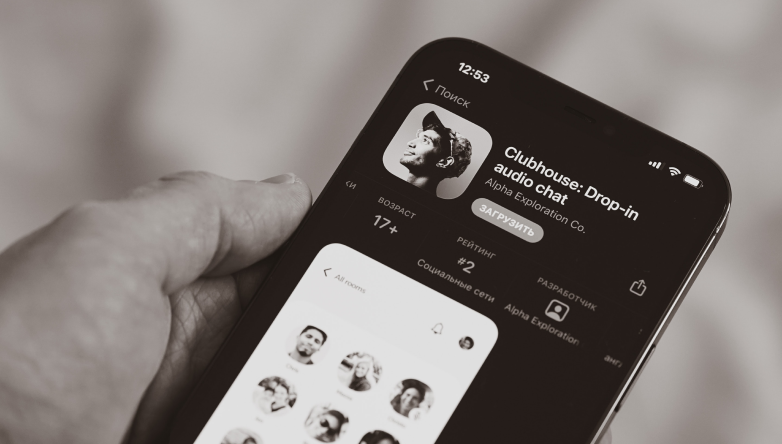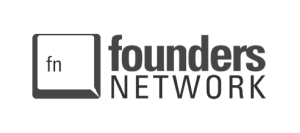Clubhouse is a social media app that rose to fame during the height of the COVID pandemic. The exclusivity of the audio app, along with its many influential users, caught the attention of industry leaders, with Spotify, Facebook and Twitter creating their own versions of the application.
But if we look beyond the hype – what is using Clubhouse really like?
Different aspects of Clubhouse
The onboarding process is not as clear as one would expect from a straightforward audio-chat app. While you do select areas of interest when setting up your profile, it remains difficult to pinpoint what a conversation will be about as limited information describing the conversation is displayed.
The initial onboarding, such as setting up your profile, is intuitive and easy. After your profile has been set up, a stream of live conversations will start to appear. This is where things tend to get a bit more confusing, as users name these conversations themselves. The topic could be one thing, but the conversation another. You have to join a conversation to really learn what it is about.
The user experience can be a little confusing as there isn’t a clear tutorial explaining how the app and all its features work. Part of the fun does lie in self-discovery. As you explore the platform you learn more about its use and navigation.
When the platform launched, there was criticism that it was invite-only. While it gave users exclusive access, exclusivity was seen as a con as it played into an elitist image. Clubhouse competitors, Facebook and Spotify, took note of Clubhouse’s shortcomings and differentiated themselves by making their platforms easily accessible. Now in July 2021, more than a year after its initial launch and a few months after its peak popularity, Clubhouse has announced that the platform is officially open to the public.
Pros
- The overall concept of Clubhouse is clever: a live podcast that you can join and participate in. Raising your hand in a conversation is a nice interactive feature, giving it a webinar feel.
- If you take a look at the user interface, it has a considered and clean look to it. Everything is big and easy to access (except for the “Leave quietly” button). The overall layout of the app is simple and easy to navigate once you’ve completed the app onboarding.
- Interestingly, Clubhouse chose to be identified by the classic hand/wave emoji. The app cover/logo, however, is constantly changing on the App Store, featuring a black-and-white photo of a user who actively contributed to conversations and interacted on the app.
- Greenroom, Spotify’s version of the audio-chatting app, has a live chat feature that could be enabled by the host, and even Twitter’s Spaces allows listeners to send emoji reactions. Initially, Clubhouse participants lacked any form of participation other than joining a room and listening. Members complained that it was difficult to engage, leading to a live chat feature being introduced, Backchannel. Backchannel allows participants in the room to directly message each other during the conversation, allowing for more active participation. In the first 24 hours after the July 14 launch users sent more than 10 million DMs; in the first week, more than 90 million DMs were sent on the Backchannel.
Cons
- A helpful addition would be the option to mute a room (as a listener) without having to leave it. If you would choose to exit the app, the sound continues playing in the background.
- Conversation topics are very vague or limited in their description. Some descriptions are made up of emoticons, making it anyone’s guess as to what that conversation is actually about.
- One of the main features most missed by users is the ability to record conversations. Not only is it a convenient feature for the person hosting the conversation, allowing them to repurpose the content, but it can also lead to more accountability. Currently, the only option is to report the offending party and give as much detail about the incident as possible. Greenroom’s biggest advantage is its recording feature. Users can request audio files after a conversation has ended and turn them into a podcast episode. This allows even greater access into the world of audio, conquering both live and recorded audio. Anchor, a free podcast platform, is also owned by Spotify, allowing users to further edit and publish their podcasts to multiple platforms.
- It should be easier to find clubhouses that you are interested in. While onboarding does help to filter some of the noise, there is still a lot of overlap. Often the topics and people you are recommended to follow do not fit your selected areas of interest.
Clubhouse’s target market
Clubhouse was initially targeted “to high-profile industry “elites,” such as celebrities, CEOs, and top online influencers.” The exclusivity of the application attracted people of influence first, drawing in their audiences and then opening it up to as many people as possible. You need an audience to listen or join in on conversations in Clubhouse, but in those conversations, you need speakers, people that others want to listen to.
However, the initial exclusivity of Clubhouse, which played a contributing factor to the mass appeal, could also have been the exact thing pushing users away from it. While the thought of coming across a conversation with someone influential is appealing, there is also another side to it. You would have to spend a lot of time browsing through channels hoping to find a celebrity that’s participating in one of those conversations – then there is also the chance that you won’t be able to join the actual conversation unless you want to settle for listening in an overflow room (a room created by an individual in the main room, streaming the conversation on a second device). If you want to consume audio content, it might be better to listen to a podcast. Not only do you know the credentials of the person you are listening to, but you have more control over the experience, being able to pause and stop when you’d want to.
Where could it still improve?
Monetising Clubhouse would be very difficult to justify. Why would a user consider paying for this app, especially since there is little way to determine the quality of the content you will consume unless you listen to it? This brings us back to the credentials of people on the app. If you could confirm that the person hosting the conversation has, for example, a PhD, you would be paying to hear an expert speak. You can be assured that the host will be speaking from authority and staying true to the topic. Facebook’s Live Audio Rooms also offers monetisation features, allowing creators to benefit from the content they create. Besides having a creator fund to support and attract emerging creators, there could eventually be an audio room subscription fee.
The application still needs more structure. The missing piece has been context. When using Clubhouse, more context can be given before joining a conversation. There needs to be a way to get an idea of what you are in for, rather than just jumping into the conversation. Perhaps this could be solved with a feature that gives you a snippet of the ongoing conversation and then a prompt to join, for example.
After announcing its decision to go public, Clubhouse also shared that it would be releasing new updates every one to two weeks. The accelerated changes seem to be made in an effort to stand out amongst its competition. However, it will be interesting to see if Clubhouse will listen to its user feedback and improve the existing experience and quality of content, rather than push for unnecessary features in a bid to keep up with rival platforms.
Overall, after trying out the application, it might not be something that everyone will like or use regularly. However, Clubhouse does execute what they are trying to do well. For a drop-in audio app, they have pretty much nailed their delivery.











